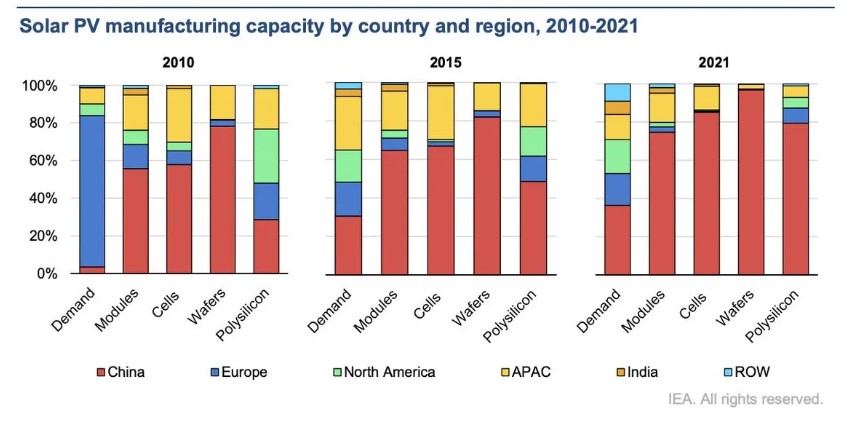‘Inflation Reduction Act’ extends beefed-up solar tax credits for 10 years and subsidizes slavery
The biggest problem with subsidies is that they encourage rational people and businesses to do irrational things.
This is particularly true when it comes to subsidizing unreliable energy sources like wind and solar because their weather-dependent nature means they cannot substitute for reliable power plants on the grid. Unfortunately, the “Inflation Reduction Act” extended the full value of the Investment Tax Credit (ITC) for ten years.
Without the IRA, the ITC was phasing down for large-scale projects and phasing out for residential projects.
According to Inside Climate News:
At its full value the ITC covers 30 percent of the cost of buying and installing a solar system. But it dropped to 26 percent this year and was going to go to 22 percent next year. After that, the credit was going to end for residential projects, and go to 10 percent for large-scale projects.
With the new legislation, the credit would return to its full value of 30 percent through 2032, and include a retroactive credit so anyone who installed systems in 2022 would get 30 percent instead of 26 percent.
Kickbacks
It has become apparent that the “Inflation Reduction Act” will do nothing to combat inflation, but it will serve to dole out financial rewards to the constituencies that liberal politicians favor.
Pretending this bill is about inflation is cynical politics, and the extension of the tax credits simply means Americans will be subsidizing the slavery that the solar industry is built upon.
Subsidizing slavery
Environmental activist Michael Shellenberger writes on his substack:
The wors[t] [part about extending the solar subsidies] is that virtually all of the solar panels are likely to come from China for the foreseeable future. That’s because China dominates every single segment of the solar panel supply chain globally. It makes 97 percent of solar wafers, 85 percent of the solar cells, 79 percent of the polysilicon, and 75 percent of the solar panels (modules).

Shellenberger continues:
Many people, myself included, believed President Joe Biden was going to ban the importation of solar panels and solar components made in China. In May, the Uyghur Forced Labor Prevention Act (UFLPA), which Biden signed into law in 2021, took effect. The aim was to end U.S. imports of products made in the Xinjiang province, where Chinese authorities have created concentrated, forced labor camps for Uyghurs Muslims, where one of the main products they make are solar panels.
The law gave the U.S. Customs and Border Protection the power to decide which imports should be banned, and had included on its list several makers of solar-grade polysilicon, the raw material used to produce solar panels.
But after lobbying by the solar industry, Biden in early June declared an “emergency” and ordered that the U.S. continue importing Chinese solar panels and products, thereby skirting the law. He did so, cynically, by making his announcement alongside invoking the Defense Production Act to accelerate the making of solar panels in the U.S., which required the declaration of an emergency.
Biden administration officials spun the move to suspend the tariffs as a temporary “bridge” to ramp up a fledgling U.S. solar manufacturing industry, and to keep the lights on. “In this case, the emergency is a threat to the availability of sufficient electricity generation capacity to meet expected customer demand,” said White House press secretary Karine Jean-Pierre.
But it was a ruse.
The IRA will do nothing to combat inflation, and it will reduce the reliability of the electric grid by incentivizing electric utilities to irrationally shut down their existing coal and nuclear power plants and attempt to replace them with a combination of solar, wind, battery storage, and natural gas plants.
Ultimately, we will all be living in a situation like California, where prices skyrocket, and reliability falters. It will be the worst of both worlds.